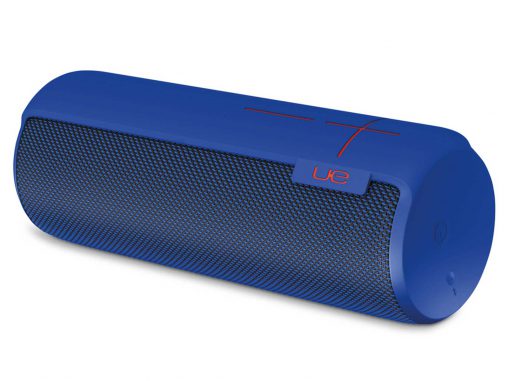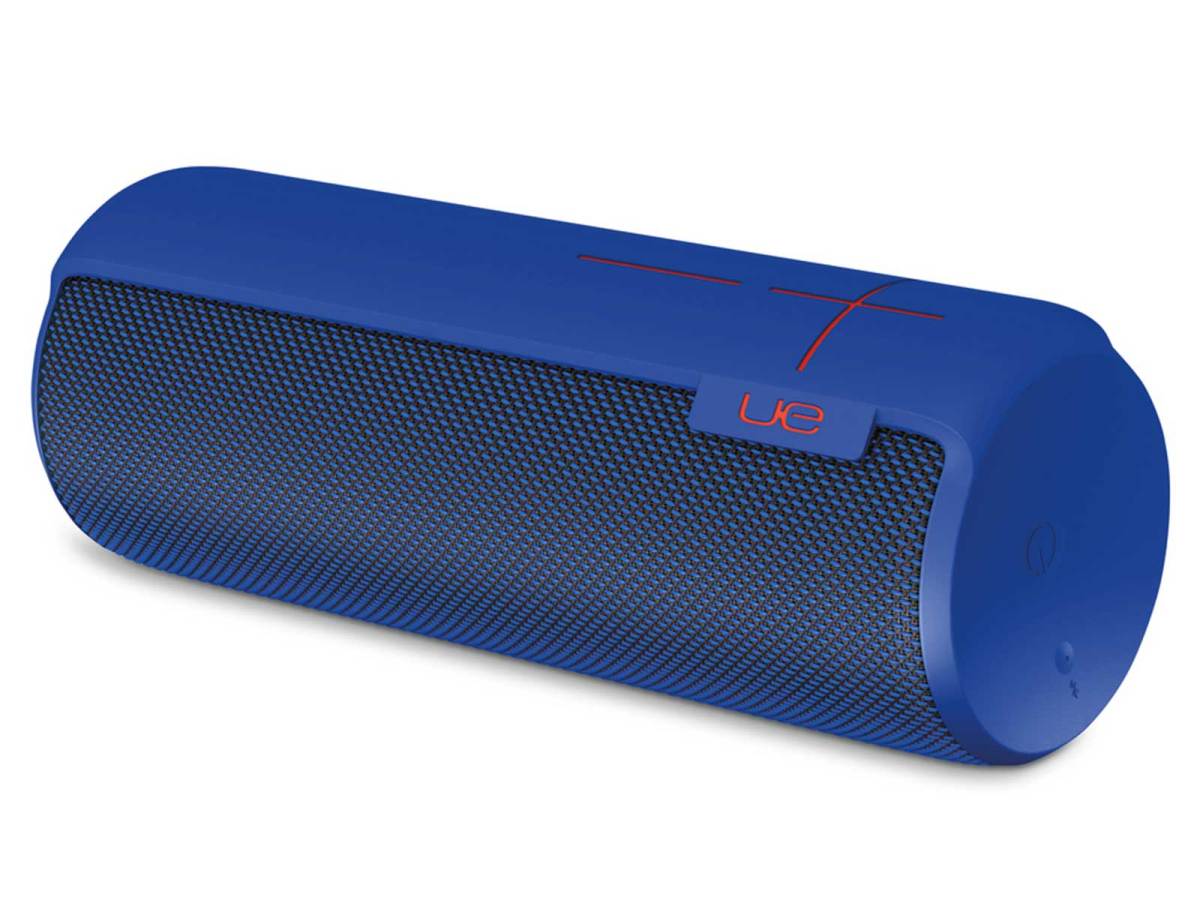
Rory Dooley grew up in Ireland listening to counterculture bands like The Clash, The Who and The Pogues. He has a sparkle in his eye when he mentions how The Beatles redefined the concept of an album with 1967’s Sgt Pepper’s Lonely Hearts Club Band. Back in those glory days, music was hard and static: Dooley listened to his favourite albums as vinyl on a record player. If he wanted to share his new favourite song with a friend, they had to get together in the same room and, of course, you had to buy the SP or LP in the first place.
Decades later and now based in Silicon Valley, Dooley is the senior vice president of Ultimate Ears (UE), originally a professional brand for live performers and now, under the ownership of Logitech, a leading vendor of personal audio products for consumers. Of course, he still loves his music, but now he streams Bastille and Lorde from the Spotify account on his iPhone over Bluetooth to his Superman blue-and-red Boom speaker.
Since launching 18 months ago, the Boom has been a revelation in Australia. Often the number-one selling speaker of its type, only occasional stock shortages have stood in the way of sales. Dooley is now in Australia to launch the Megaboom, which is essentially the Boom on steroids — the same ratio of dimensions, just bigger and meatier — but now waterproof (the Boom is only water resistant), as well as stain proof and tough enough to survive drops from tabletop heights.
The success of the Boom, and the expected interest in the Megaboom, was borne out of UE’s approach to ‘capital-D design’, as Dooley puts it, which started by looking at the user and their music consumption, rather than looking at sound reproduction, which tends to be the mantra of rival audio brands.
“When we first designed the UE Boom, we really took a very different, big picture approach to design,” Dooley said in an interview. “We stepped back and said, ‘Where is music going and how are people going to consume music in the future?’. We looked at the way people have consumed music in the past — we used to have a physical ecosystem of devices: cassette decks, turntables, CD players; and we had physical music: vinyl, CDs, cassette — and those things are still there, to some extent, but the reality is that as we consume music in the modern era, we don’t have those things.”
UE Booms and Megabooms certainly stand out. Available in a range of two-toned colour schemes, the speakers eschew the earthy or wooden colours traditionally used in older hi-fi speaker facades, instead showcasing a clash of primary colours. They are not subtle but they are effective, and they are certainly more vivid than the faux-metallic and plasticky grills seen on rival Bluetooth speakers.
The cylindrical design of the Boom and Megaboom mean sound can be projected from a central position to all parts of a room, while the shape also lends itself to carrying, enhanced by the protective mesh fabric wrap that has a great handfeel. Portability is an important attribute of UE speakers. The Megaboom has a quoted 20-hour battery life (up from 15 hours for the Boom) and Dooley wants the trade to promote it as both an indoor and outdoor product. Play music from the PC’s hard drive at home or take it to the beach and stream content from a 4G network. Either way, it seems a long way removed from a Brimful of Asha on the 45.
“The physical media and players have disappeared, and what used to be the humble speakers, which was the peripheral device to this music ecosystem, and would sit in the left and right corner [of a room]. For us, the speaker needed to be an object that was friendly to hold, was tactile and from, a design point of view, could sit front and centre in a room.”
In a description that would please Ayn Rand, Dooley said the individual is very much at the heart of UE’s product development.
“This speaker was designed for the person, not for the room,” he said. “Other brands design speakers for rooms — ‘here’s nice speaker that will look nice in your room’ — but it’s not your speaker, it’s the room’s speaker, it belongs to the collective instead of the individual.”
The speaker may be ours but, nowadays, the music rarely is. Rather than owning and cherishing albums from our favourite artists, we lease them from multinational streaming corporations, like Spotify, Deezer, Rdio and Google’s Play Music. The Boom has captured this zeitgeist and Dooley is aware the Boom is a product of its time. There are few constants: the music industry is a game that changes as you play.
“Change happens a lot in the music industry. We are in a period of change; music and musicians are getting back to performances as being the means of making their living, and recording is a means of justifying the performances — to some extent — putting something out there to motivate people to come and see them live in concert.”
One of the big changes in music hardware over the past few years has been the explosive growth, admittedly off a very low base, of multiroom wireless systems. Since being pioneered and popularised by Sonos, many brands have joined this fray, including big hitters Samsung and LG, as well as niche outfits like Bluesound and Heos by Denon. I asked Dooley if the growth of these systems was a threat to UE.
“There are two different things going on here,” he said. “The Wi-Fi enabled speakers are built around infrastructure, something that you put into your home, and that’s a very valid market and a big market; but a slightly different market nonetheless.
“A lot of young people don’t own homes, so they won’t necessarily identify with that as much, because you need a Wi-Fi network, you need a plug in the wall – if you have all those things then it’s great to build the infrastructure. There is also a market for casual, ad hoc, listening on the go.
“Both markets will coexist. We’ll bring features and benefits to our products that will allow people to use them in more and more environments, and I’m sure Sonos and the other people will do the same as well.”
Some of these new features include the ability to turn Booms and Megabooms on and off remotely via a smartphone or tablet (currently you have to press a button on the speaker), pairing between Booms and Megabooms for stereo sound and over-the-air firmware upgrades. Later this year, Dooley said users will be able to network up to 10 Booms and Megabooms for a totally immersive party experience.
When asked if UE is currently developing a multiroom system, Dooley said, “I don’t want to say what we’re developing or not developing”. For what it’s worth, however, it would be of great surprise if UE were to unveil a Sonos-style system in the short-to-medium term. The focus this quarter is on the new Megaboom, with new headphones to replace a range that is now over two years old the next expected release.
It’s fair to say the speaker and headphone markets are not sparsely populated — there seems to be new brands entering each week — so the support of retailers is paramount to sales success. Dooley said the industry has been very good to UE.
“The trade has really embraced us and helped us execute our vision. We really feel great about Australia because there are few places in the world where we would look at and say, ‘This is working the way would like it work’.
“There is always room to improve everywhere, but Australia is one of the places where we look and say, ‘If only the rest of the world could be Australian, it would be really fantastic’.”
What if a customer were to walk into a JB Hi-Fi store and ask about speakers? What response would he expect from the salesperson?
“They’d probably ask you how much you are willing to spend — they should be sensitive to your needs and wants — and if your budget reaches to our products then we would certainly like them to recommend those products above everything else, because we believe it’s the best.”
The UE Megaboom will be hitting shelves in Australia in February 2015. It is RRP $349. The UE Boom (RRP $199) and Mini Boom (which does not have interBoom stereo networking capabilities,RRP $99), are already on the market.

